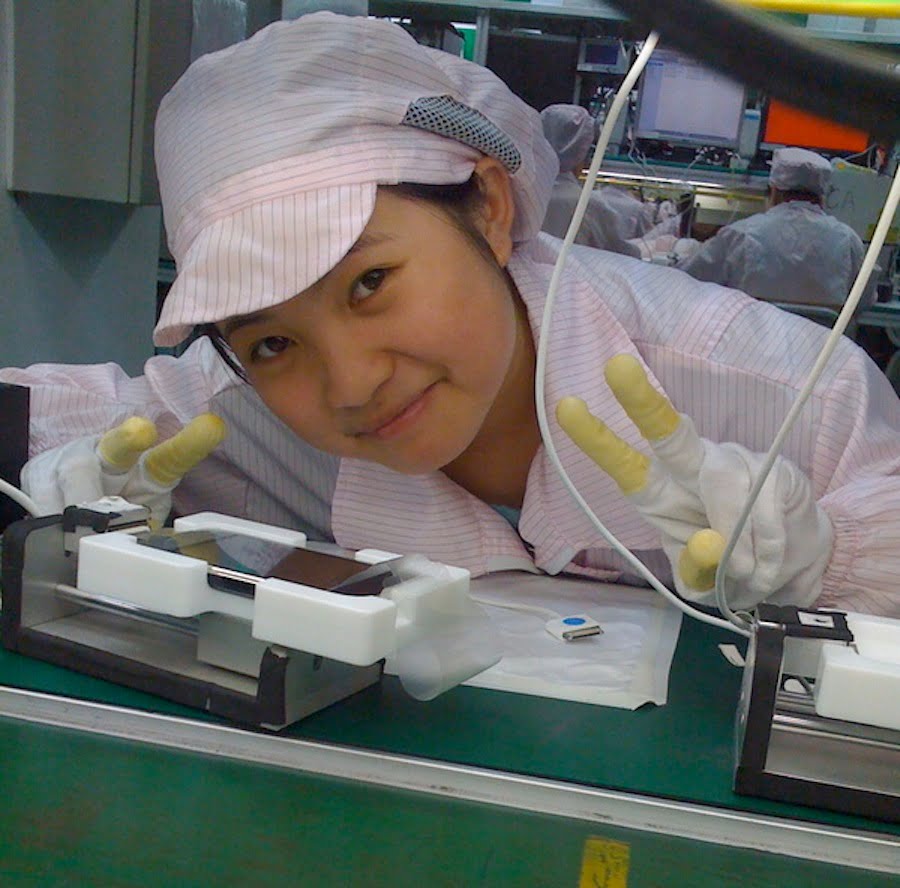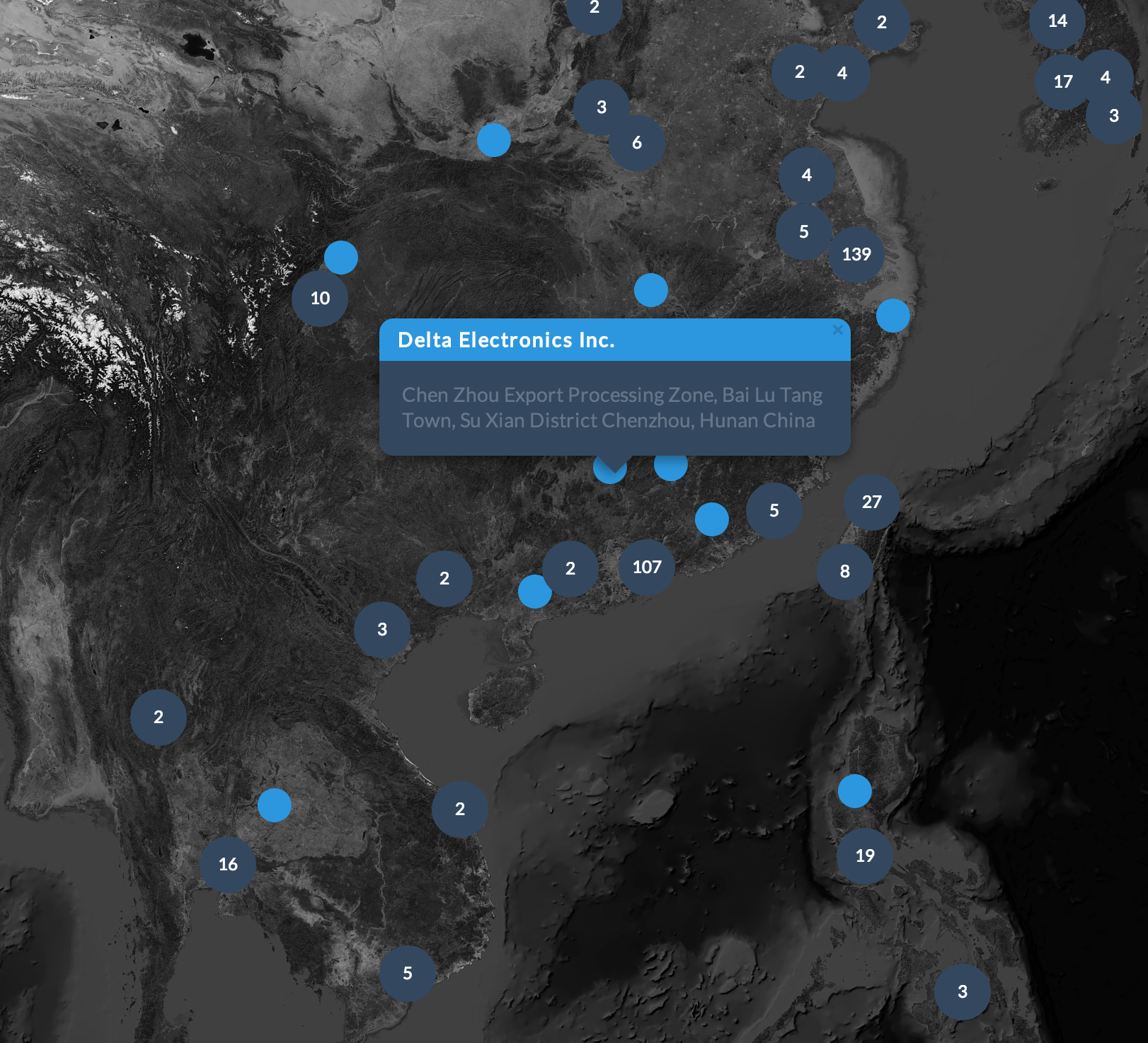Phone People
Surreptitiously captured on phones, laptops, and cameras are unauthorized images belying the status of those devices as mass manufactured objects of consumption, a disjuncture between the antiseptic tenants of contemporary design and the otherwise microbial actors necessary for its promise of undifferentiated technology. Housed in factory dormitories in China, assembled in Mexican maquiladoras, and put to work soldering connections in Vietnam, Taiwan, and Brazil, we have to begun to encounter the diffuse network of actors at stake in manufacture. How have the images of workers within our devices become the only indicator of their indispensable inhabitation outside them? If this is the form for a new epistemology of production, how does it differ from prior ones? How had we known the actors in productive networks, the kinds of alliances they formed, and the material mechanisms which enabled and constrained them? The nature of these encounters, I suggest, contains the potential for new ways of looking at the nature of production. In asking questions of them, I would like to say something about the current state of this epistemology—what it means for the future of production, manufacture, and making.

Figure 1. Anonymous Foxconn worker, iPhone photograph distributed by Mark Mitchell, Kingston-upon-Hull, UK.
Of the unsanctioned images that have surfaced, the most recognizable has been of the young woman who has come to be known as the “iPhone girl.”1 She has become an emblem not only for this class of individual actor, but for this (seemingly) unusual way we have come to know them. Writing of her unexpected capture on a consumer’s “brand new” iPhone 3G, Ananya Roy comments that:
Once invisible, the Shenzhen assembly line is now the site of various worlding practices, including that where a migrant worker, completing the assembly of an iPhone, left a photograph of herself on the phone. Dressed in a pink and white striped uniform, smiling, making a peace sign, her image became the indelible trace on the next-generation 3G iPhone that was to eventually make its way into the hands of “markm49uk,” a British consumer. In the circuits of cybercirculation, she came to be known simply as “iPhone girl.” By asserting her place in the global value chain, “iPhone girl” suggests the possibility of an imagined community crafted through the transactions of the global commodity.2
Mark Mitchell is an information technology manager from Hull, and the Apple customer exposing the assemblage responsible for his device’s assembly—unsealing this young Chinese woman along with his factory-sealed phone. His account of the experience can be placed within Roy’s usage of the imagined community, but it also hints towards the uncomfortable intimacies that result when a familiar device is imagined within an unfamiliar network of production:
Initially I was a little angry as I thought the handset was a used phone that had been repaired or something similar. Then I looked at the photos in more detail and saw it was of the production facility […] For me it shows that people are interested in understanding more about other cultures and the personalization of mass production and globalization. I think this is great publicity for Apple overall. [The production line] conditions in the pictures appear to be fairly modern and professional. There have been some negative comments but I really hope Apple does use her in an advert or other publicity as it would be great for her. I also hope Apple ensures she is OK—I did email Steve Jobs but have had no response as of yet. It would be great if this turned out as a positive in her life and I would like to get in touch with her if possible—just to hear her side of the story. The Internet attracts all sorts and some comments about her, and indeed China, have been fairly offensive and ignorant. But the vast majority are favorable and at the end of day she is quite attractive!3
This accidental advertisement (or, in Roy’s description, the intentional assertion) of stories attached to the manufacture of mobile devices (and here, captured in memory, to the devices themselves) suggests how consumers are able and unable to recognize the productive networks surrounding their consumptive objects. Modern devices are complex, and hostile to interrogation. They are networked objects, not only within the telephonic network, but as entities inescapably enmeshed in the sprawling supply chains from which they are wrought.4 They are housed in plastics made with materials from Ecuador, Saudi Arabia, and Russia. They come with metals (like aluminum and titanium) and glass bought from Africa, South America, and Asia. Their batteries are made from cadmium, nickel, and lithium fashioned (sometimes) in the United States, but often in Chile or Japan. Each requires components—speakers, microphones, clocks, and sensors—imported from East and Southeast Asia. The circuit board, memory, and sim card arrive occasionally from Japan and Malaysia, but more often from China and Taiwan. Littered throughout these components are metals—gold, copper, tantalum, tin, and aluminum—drawn from South America (in places like Chile or Brazil) and Africa (from South Africa and the Congo). These myriad and precious ingredients are identified, gathered, processed, and assembled. While this could be done in the United States, the United Kingdom, or continental Europe, these assemblies are increasingly governed by factories in China, Taiwan, Brazil, and Mexico.

Figure 2. Map of Apple Suppliers.
Drawn from Apple’s published supplier list.
In the face of such staggering complexity, how could we hope to know the individual citizens of these material nations? This already too exotic manifest, offered with a singular perspective, is made impossibly remote and abstract. But as socially instantiated commodities, these devices are heterogenous productions made with heterogenous engineering.5 Plastics are fused by (and with) people. Metals are produced by first producing miners, then producing mines. To the litany of atoms and elements we add actors, sites, and politics—both lives and ways of life. The images of phone people, the anonymous Foxconn worker, men at an HP Laptop testing facility, women at the Nokia Lumia 920 factory in Tamaulipas, contain the potential to dramatically renegotiate our readings. Rather than the suspension of both the familiar thing and its marvelous manifest, the productive apparatus now inscribes the potential to engender human recognition and connection within itself. Images of this human network surface from within to mediate not only the global objects they construct, but to transform matters of fact to matters of concern. Understanding the foundations of production, the modes of mediation for manufacture, becomes a collective experience actively shaped by human actors, rather than a consumable narrative for consumable objects. But is this a new era of understanding, or is it the rehabilitation of a far older, and more complicated, way of thinking? I would argue that it is a new technological potential for universalizing an ancient epistemology of production to the scale of the modern consumer society.

Figure 3. Composite image of surreptitiously captured photographs of workers in the assembly of consumer electronic devices.
Notes
-
Follow the Things has a much more comprehensive summary of the discourse surrounding this young woman, see Ian Cook, et al., “iPhone 3G – already with pictures! (aka ‘iPhone Girl’),” followthethings.com (2011). ↩
-
Ananya Roy, “Postcolonial urbanism: speed, hysteria, mass dreams,” in Ananya Roy & Aihwa Ong eds. Worlding Cities: Asian Experiments and the Art of Being Global (Oxford: Blackwell, 2011), 316. ↩
-
Mark Mitchell, “iPhone 3G – already with pictures! (aka ‘iPhone Girl’),” Macrumors Forum (http://bit.ly/15P9bJX), August 20th 2008. ↩
-
Rob Holmes has pointed out that the iPhone should be thought of, ‘not as a discrete, independent hand-held device (“the phone that magically has the internet in it’, which I think is more or less how Apple wants you to think of it), but as a networked object that both produces and is produced by a wide array of distant and not-so-distant landscapes, from zinc mines to Fed-Ex distribution hubs.” Rob Holmes, “An Atlas of iPhone Landscapes,” mammoth, February 7th 2012. ↩
-
Wiebe Bijker and John Law map the evolution of actor-network theory (ANT) from Michel Callon’s work towards a “neutral vocabulary” for the actions of what Law calls “heterogeneous engineers.” ANT describes how these engineers build messy networks that combine the technical with the social. These elements are bound up in networks, but they also are “constituted and shaped in those networks.” See Wiebe E. Bijker and John Law, eds., Shaping Technology/Building Society: Studies in Sociotechnical Change (Cambridge: MIT Press, 1992), 12-13. ↩


